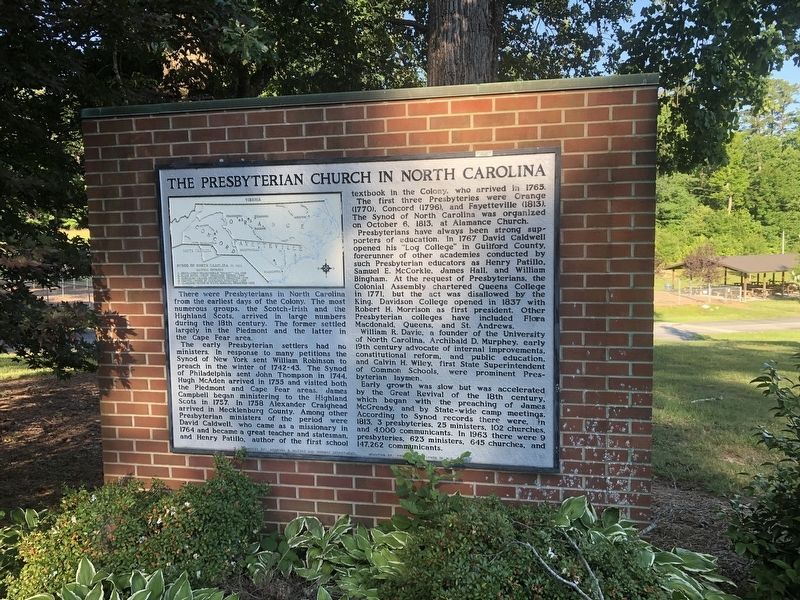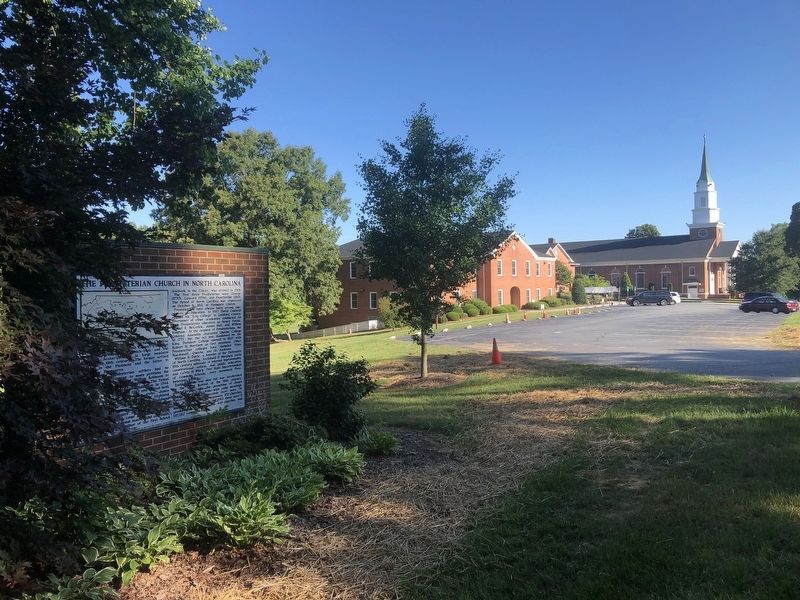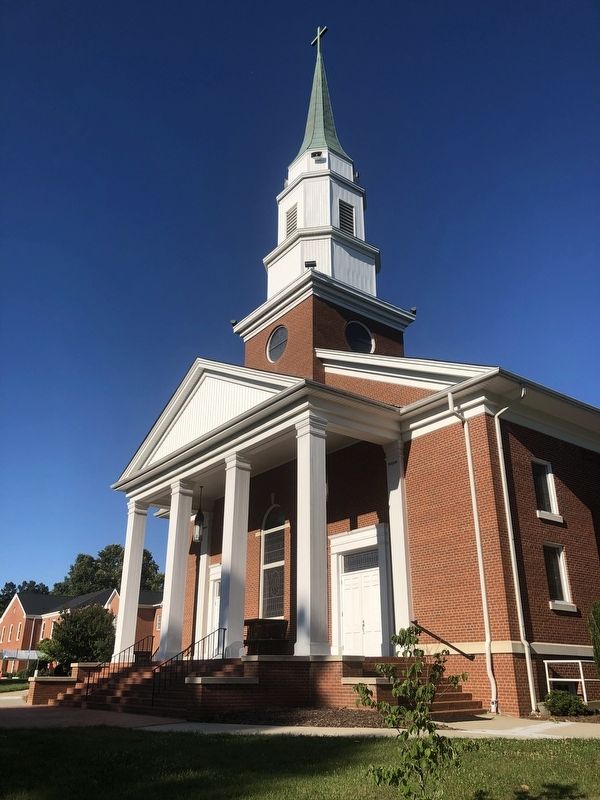Near Greensboro in Guilford County, North Carolina — The American South (South Atlantic)
The Presbyterian Church in North Carolina

Photographed By Devry Becker Jones (CC0), June 17, 2021
1. The Presbyterian Church in North Carolina Marker
There were Presbyterians in North Carolina from the earliest days of the Colony. The most numerous groups, the Scots-Irish and the Highland Scots, arrived in large numbers during the 18th century. The former settled largely in the Piedmont and the latter in the Cape Fear area.
The early Presbyterian settlers had no ministers. In response to many petitions the Synod of New York sent William robinson to preach in the winter of 1742-43. The Synod of Philadelphia sent John Thompson in 1744. Hugh McAden arrived in 1755 and visited both the Piedmont and Cape Fear areas. James Campbell began ministering to the Highland Scots in 1757. In 1758 Alexander Craighead arrived in Mecklenburg County. Among other Presbyterian ministers of the period were David Caldwell, who came as a missionary in 1764 and became a great teacher and statesman and Henry Patillo, author of the first school textbook in the Colony, who arrived in 1765.
The first three Presbyteries were Orange (1770), Concord (1796), and Fayetteville (1813). The Synod of North Carolina was organized on October 6, 1813, at Alamance Church.
Presbyterians have always been strong supporters of education. In 1767 David Caldwell opened his "Log College" in Guilford County, forerunner of the other academies conducted by such Presbyterian educators as Henry Patillo, Samuel E. McCorkle, James Hall, and William Bingham. At the request of Presbyterians, the Colonial Assembly chartered Queens College in 1771, but the act was disallowed by the King. Davidson College opened in 1837 with Robert H. Morrison as the first president. Other Presbyterian colleges have included Flora Macdonald, Queens, and St. Andrews.
William R. Davie, a founder of the University of North Carolina, Archibald D. Murphey, early 19th century advocate of internal improvements, constitutional reform, and public education, and Calvin H. Wiley, first State Superintendent of Common Schools were prominent Presbyterian laymen.
Early growth was slow but was accelerated by the Great Revival of the 18th century, which began with the preaching of James McGready, and by State-wide camp meetings. According to Synod records there were, in 1813, 3 presbyteries, 25 ministers, 102 churches, and 4,000 communicants. In 1963 there were 9 presbyteries, 623 ministers, 645 churches, and 147,272 communicants.
Erected 1963 by Archives & History and Highway Department; mounting by Presbyterian Synod of North Carolina. (Marker Number JJ-1.)
Topics. This historical marker is listed in these topic lists: Churches & Religion • Colonial Era • Education. A significant historical date for this entry is October 6, 1813.
Location.

Photographed By Devry Becker Jones (CC0), June 17, 2021
2. The Presbyterian Church in North Carolina Marker
Other nearby markers. At least 8 other markers are within 5 miles of this marker, measured as the crow flies. Alamance Church (about 800 feet away, measured in a direct line); In Memory of Elizabeth "Bettie" Wiley Forbis (approx. 0.2 miles away); Veterans Memorial (approx. 0.2 miles away); Alamance Church Buildings Site (approx. 0.2 miles away); Calvin Wiley (approx. 2.9 miles away); Greensboro Massacre (approx. 4.3 miles away); The Greensboro Six (approx. 4.6 miles away); Greensboro 6 (approx. 4.6 miles away). Touch for a list and map of all markers in Greensboro.

Photographed By Devry Becker Jones (CC0), June 17, 2021
3. Alamance Presbyterian Church, which stands nearby
Credits. This page was last revised on February 20, 2023. It was originally submitted on June 19, 2021, by Devry Becker Jones of Washington, District of Columbia. This page has been viewed 186 times since then and 35 times this year. Last updated on February 17, 2023, by Michael Buckner of Durham, North Carolina. Photos: 1, 2, 3. submitted on June 19, 2021, by Devry Becker Jones of Washington, District of Columbia. • Bernard Fisher was the editor who published this page.